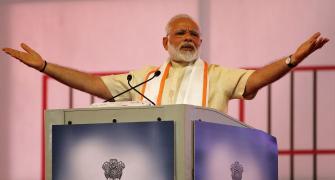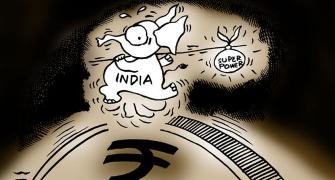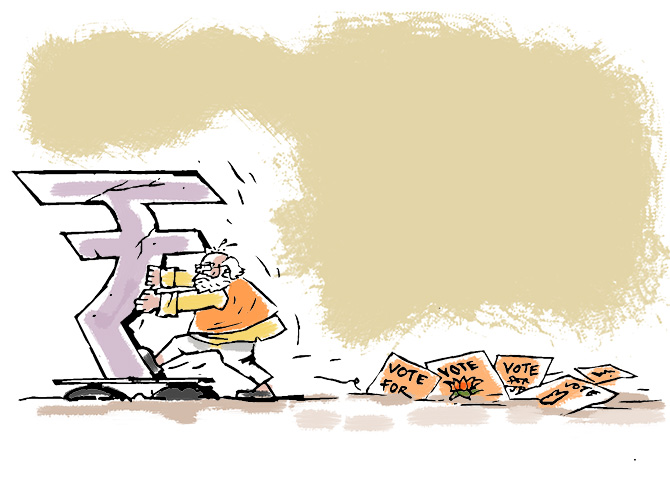‘No one should labour under any illusions. Without structural change, sustainable economic growth will continue to trend downward,’ says T N Ninan.

In the midst of a demand slump the like of which the economy has not seen for some time, there will be many experts offering reasons and solutions. This is a modest contribution to the debate.
Indian consumers are up to their necks in debt (refer to this column).
EMIs (equated monthly instalments on loans) have been taking an ever larger share of take-home pay because a steadily larger share of consumption has been fuelled by borrowed money.
Making matters worse, many people are paying EMIs on loans taken for hundreds of thousands of houses or flats lying incomplete for years.
Second, consider the effects of lower inflation. Pay hikes get smaller, so the easing of the EMI burden that used to happen over time is now absent.
Also, because interest rates too have come down, people are pushed to save more for their senior years, and spend less now.
Third is the negative wealth effect. Real estate prices have dropped by 25 per cent and more. Stock market indices too are lower than they were a year ago, and many mutual funds have given poor returns, if not negative.
When people feel poorer, they spend less.
Fourth, the employment structure has changed because there are fewer women in the workforce.
Whatever the mix of reasons (women studying for longer, gentrification, lack of safety during the commute, and a shortage of work available), there are now fewer working adults in the typical family. This must affect family incomes.
Fifth is the possible impact of people living longer. The population in the 60+ age group is growing at about twice the overall population growth rate (more than 35 per cent in a decade). This must raise health costs for families as they take care of the elderly.
Consider the sharp increase (154 per cent over four years to 2017-18) in household debt for reasons other than for housing, vehicles, consumer durables and education. Some of this might be for marriages and other social occasions, but some would certainly be to cover medical bills.
Sixth is the point that Rathin Roy has made that much of the demand for goods and services is confined to a thin upper-crust.
Not as thin as he says, because the consuming cohort is 30-35 per cent of the total population.
As an indicator, the 2011 Census showed that 21 per cent of 246 million households owned a powered two-wheeler. That percentage would be appreciably higher today, as about six per cent of households -- 17 million in 2017-18 -- have been buying two-wheelers every year. Only some of that would be replacement demand.
Still, Roy is right that the spending cohort is not growing fast enough. One reason would be that growth of labour-intensive manufacturing (which has the capacity to deliver a living wage rather than just a minimum wage) has not been able to create a larger spending category at the lower middle class level. The gig economy, typically with lower productivity and therefore incomes, is no substitute.
Finally, seventh, there is the transition in agriculture. Farmers now produce more than domestic markets can absorb.
In the absence of exports as a sufficiently large spillover outlet, the changing domestic demand-supply balance has created price pressures that limit farm incomes despite higher production (which comes with higher costs and more variable prices, and therefore greater uncertainty).
Again, if labour-intensive manufacturing had succeeded, and pulled people into factories from farms, there would have been fewer farm mouths to feed.
It boils down to the changes needed to facilitate wage-intensive manufacturing (including labour law reform, a competitively-priced rupee, efficient infrastructure, supply-chain development, etc).
The government has an agenda on some of this, but -- to take one example -- it is not enough to reduce multiple labour laws into four codes. Mere compilation/number reduction without a change in the content of the codes will make no difference.
Under pressure to revive the economy, the government might look for quick fixes. That’s understandable, but no one should labour under any illusions.
Without structural change, sustainable economic growth will continue to trend downward.










